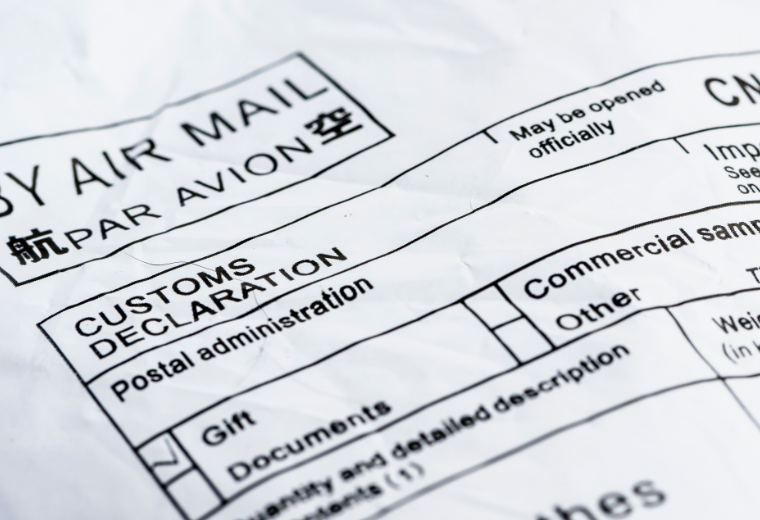
The de minimis exemption, allowing low-value shipments (under $800) to enter the U.S. duty-free and with minimal paperwork, has fueled the growth of e-commerce and cross-border trade, particularly from Asia. The volume of these direct-to-consumer shipments using this loophole has exploded, surging from 140 million a decade ago to over 1 billion last year.
However, this rapid expansion has raised concerns. The White House points to the undercutting of American workers and businesses, alongside difficulties in ensuring product safety and compliance. Moreover, the de minimis rule has been exploited to facilitate the illegal import of narcotics like fentanyl.
The proposed changes from the Biden-Harris administration, which could significantly impact the Section 321 program, are far-reaching, affecting 40% of all imported goods and a staggering 70% of all textiles. This means that ultra-cheap, ultra-fast fashion giants like Temu and Shein, who have built their business models around this loophole, may soon face significant hurdles.
As your trusted 3PL partner, Quiet wants to keep you informed about how these changes could impact your business, especially if you rely on the Section 321 program for low-value shipments.
Key Changes & Their Impact on Section 321
The Section 321 program, a cornerstone for many online retailers, could be significantly impacted by these proposed de minimis changes. Certainly, it will tamper competition from Asian companies, but it may also affect how American based retailers operate as well. Let’s delve into the specifics.
The proposed changes aim to address these issues by:
Excluding import-sensitive products: Shipments containing textiles and apparel subject to tariffs (Sections 201, 301, and 232) will no longer qualify for de minimis eligibility, directly impacting Section 321 shipments of these goods.
Tighter Restrictions & Increased Scrutiny: Products covered by trade enforcement actions will be excluded, and there will be a push for increased domestic procurement and stricter enforcement against illicit imports, including more documentation requirements.
Increased Data Requirements: Importers will be required to provide additional data for de minimis shipments, including 10-digit tariff classification numbers and electronic filing of Certificates of Compliance for consumer products. This could slow down the import process and add complexity, especially for businesses relying on Section 321’s streamlined procedures.
What About Shipments from Canada and Mexico?
While the proposed changes primarily target goods subject to certain U.S. tariffs, the impact on shipments from Canada and Mexico under the United States-Mexico-Canada (USCMA) Agreement remains unclear. Theoretically, only goods originating in these countries and meeting USCMA rules of origin would benefit from higher de minimis thresholds. Transshipped goods or those manufactured in the U.S. but shipped from elsewhere would likely face lower thresholds.
We don’t yet know how or when they will start enforcing these changes.
Potential Impacts on Retailers
These changes could significantly affect how you import goods:
- Increased Costs: Apparel, footwear, gifts, and beauty products currently entering duty-free under de minimis may soon be subject to tariffs. This could lead to higher prices for consumers and reduced margins for retailers.
- Lengthened Import Processes: Additional data requirements, including 10-digit tariff classification numbers and electronic filing of Certificates of Compliance for consumer products, could slow down the import process and could delaying inventory replenishment during critical sales periods.
- Supply Chain Disruptions: Navigating the complexities of product eligibility could lead to mistakes in classification. Items incorrectly categorized as de minimis may face delays or abandonment at customs.
What This Means for You
While these changes are still proposals, it’s important to start preparing as they are expected to pass:
- Review your product catalog: Identify items that may be affected by the proposed tariff exclusions and Section 321 restrictions.
- Evaluate your supply chain: Consider how additional data requirements might impact your shipping processes. Explore alternative import strategies if you heavily rely on Section 321.
- Stay informed: Keep an eye out for further updates as these proposals move through the regulatory process.
How Quiet Can Help
As your 3PL partner, we’re closely monitoring these developments. We’re committed to helping you navigate any changes that may come:
- We’ll provide updates as more information becomes available.
- Our team is ready to assist you in adapting your import strategies if needed.
- We’re exploring ways to streamline data collection and classification to minimize potential disruptions.
Rest assured, Quiet is here to support you through any regulatory changes. If you have any questions or concerns, please don’t hesitate to reach out.
We’ll continue to keep you informed as this situation develops.